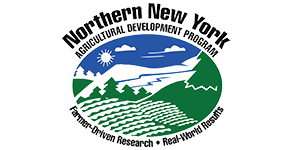 Northern New York Agricultural Research and Development Program Marks 60 Years Strong
Northern New York Agricultural Research and Development Program Marks 60 Years Strong
Canton, New York: March 2, 2021. The Northern New York Agricultural Development Program (NNYADP) has marked its 60th year of conducting practical and innovative agricultural research in support of New York’s diverse farming industry. The New York State Legislature created the program in 1961 in recognition of the opportunities and challenges unique to the state’s northernmost region. Funding for the NNYADP is supported by the New York State Legislature and administered by the New York State Department of Agriculture and Markets.
Recent areas of focus for NNYADP research include water quality conservation, local food hub development, and climate adaptability. The program’s history, research reports, and updates are posted at https://nnyagdev.org.
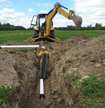
NNYADP Research Overview
The NNYADP has collaborated with the W. H. Miner Agricultural Research Institute on agricultural tile drainage research since 2010. Recent on-farm trials have provided new data for analysis of the factors and interactions that influence how nutrients travel across and through soil. This unprecedented agricultural water quality research is evolving best practices for farm-based environmental stewardship. It has included trials at the New York State Department of Environmental Conservation’s Lake Alice Wildlife Management Area.

Local food hub development research funded by the NNYADP since 2013 has helped provide northern New York an adaptable foundation in support of local food security during the pandemic. The opportunity to produce novel first fruits and fresh produce year-round under northern New York’s microclimate conditions and shorter growing season area the focus of NNYADP regional food projects including “super fruits” research and high tunnel production trials. Preparations have been made to add elderberry to NNYADP fruit research trials this spring.
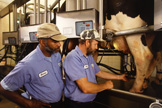
To help train dairy workers, the NNYADP funded a project by Quality Milk Production Services, Canton, N.Y., to begin developing e-learning training for dairy farm milking parlor personnel.
Multiple states are now applying or testing the use of biocontrol nematodes for crop pest management, a protocol pioneered by Cornell University entomologist Elson Shields, Ph.D., on northern NY dairy farms with long-support from the NNYADP farmer committee. Nearly 28,000 acres in northern New York state are now protected by this “NNY-grown” biocontrol practice.
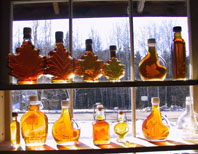 NNYADP research has supported the growth of the regional maple industry that was predicted in 2008 to have the potential to reach a $10 million per year value is now headed toward a $12-15 million annual impact.
NNYADP research has supported the growth of the regional maple industry that was predicted in 2008 to have the potential to reach a $10 million per year value is now headed toward a $12-15 million annual impact.
Farming in NNY and the NNYADP
According to Census of Agriculture data, the northern New York agricultural sector involves significant numbers of young farmers, new, and beginning farmers; and female and small farm owners. The region has been an agricultural economy leader for the state, holding 23 first place rankings by agricultural commodity or total sales of agricultural products.

NNYADP founder Dr. Robert F. Lucey had a vision for developing the potential of the northern region of New York as an agricultural powerhouse for the state through practical and applied research. Today, approximately 100 farmers representing the diverse sectors of agricultural businesses in the region prioritize NNYADP projects for grant to conduct real-world research in support of the dairy, field crops, local foods, maple, honey, and livestock sectors.
 The NNYADP serves as a major economic engine for St. Lawrence, Clinton, Essex, Franklin, Jefferson, and Lewis counties. Jon Greenwood of Canton, Joe Giroux of Plattsburgh, and Jon Rulfs of Keeseville serve as Northern New York Agricultural Development Program Co-Chairs. More information is posted at https://nnyagdev.org.
The NNYADP serves as a major economic engine for St. Lawrence, Clinton, Essex, Franklin, Jefferson, and Lewis counties. Jon Greenwood of Canton, Joe Giroux of Plattsburgh, and Jon Rulfs of Keeseville serve as Northern New York Agricultural Development Program Co-Chairs. More information is posted at https://nnyagdev.org.
 Northern NY dairy and cash grain producers are assisting Cornell Nutrient Management Spear Program Director Quirine M. Ketterings, Ph.D., with NNYADP-funded research on the potential to use satellite and drone imagery to provide all farmers with access to yield estimates for zone-based field management efficiency.
Northern NY dairy and cash grain producers are assisting Cornell Nutrient Management Spear Program Director Quirine M. Ketterings, Ph.D., with NNYADP-funded research on the potential to use satellite and drone imagery to provide all farmers with access to yield estimates for zone-based field management efficiency.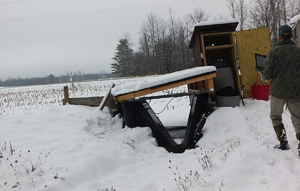
 Hay & Forage Grower magazine recently (2/9/2021) featured an article by Editor Mike Rankin titled
Hay & Forage Grower magazine recently (2/9/2021) featured an article by Editor Mike Rankin titled